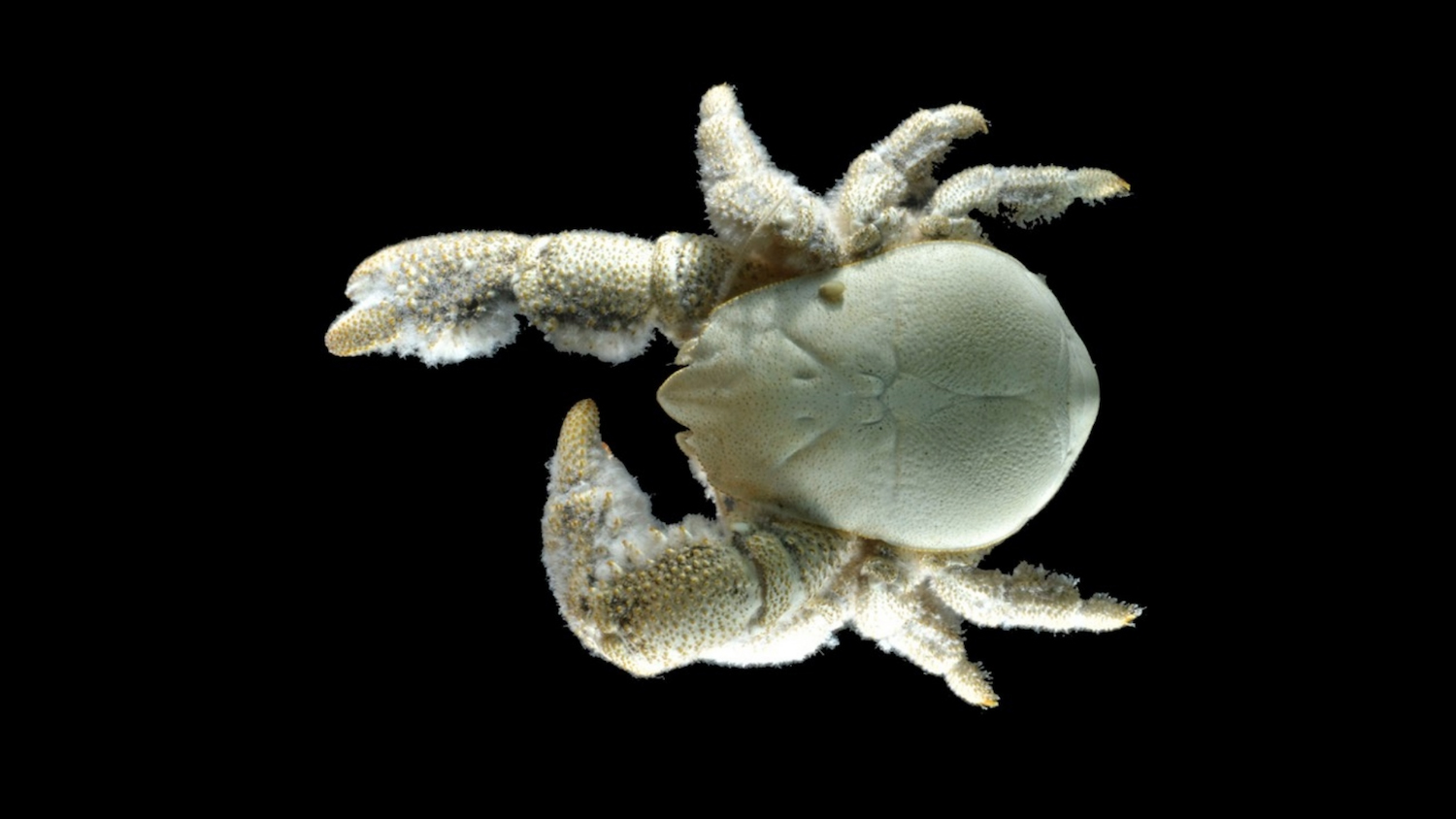Top photo by Ifremer / A. Fifis. Above photo by NERC (National Environment Research Council)
Of all the remote places on our planet, the depths of the Southern Ocean remain among the most mysterious and alien of all. Protected from human exploration by the crushing weight of seawater, rough surface swells, massive icebergs and sheer distance from civilization, the seafloor around Antarctica is a dangerous – and expensive – place to reach.
The darkness of these frigid waters hides marine life and even entire ecosystems we know almost nothing about. A good case-in-point is the otherworldly Yeti Crab, named for its pale white color and long, hairy arms. First observed in the Pacific Ocean south of Rapa Nui in 2005, it was more recently discovered in dense quantities surrounding hot, hydrothermal vents in Antarctica. With up to 700 crabs – which are actually a species of ‘squat lobster’ – per square meter, these colonies are among the most dense concentrations of animals ever observed, anywhere.
ROV image of Yeti Crabs (Kiwa tyleri) in Antarctica by NERC.
Amid the pressure, heat and chaos of the vents something incredible is happening. Scientists at first weren’t sure why Yeti Crabs evolved such long, hairy arms – or why they seemed to be slowly waving them around. Further examinations of specimens brought to the surface and observations by deep-sea submersibles soon revealed the answer. The crabs are actually farmers, who use their bristly appendages to cultivate colonies of aquatic bacteria.
Photo by David Shale/NERC.
Waving their arms around helps fertilize the bacteria, which is then scraped off and eaten with highly-evolved and specialized mouths. Nourished by the seawater and mineral-rich vents, these mobile farm provide all the food the crabs need – and provided the first ever example of marine life ‘farming’ bacteria. As we explore further beneath the waves and under the ice around Antarctica, scientists expect to make many more such ocean discoveries.















